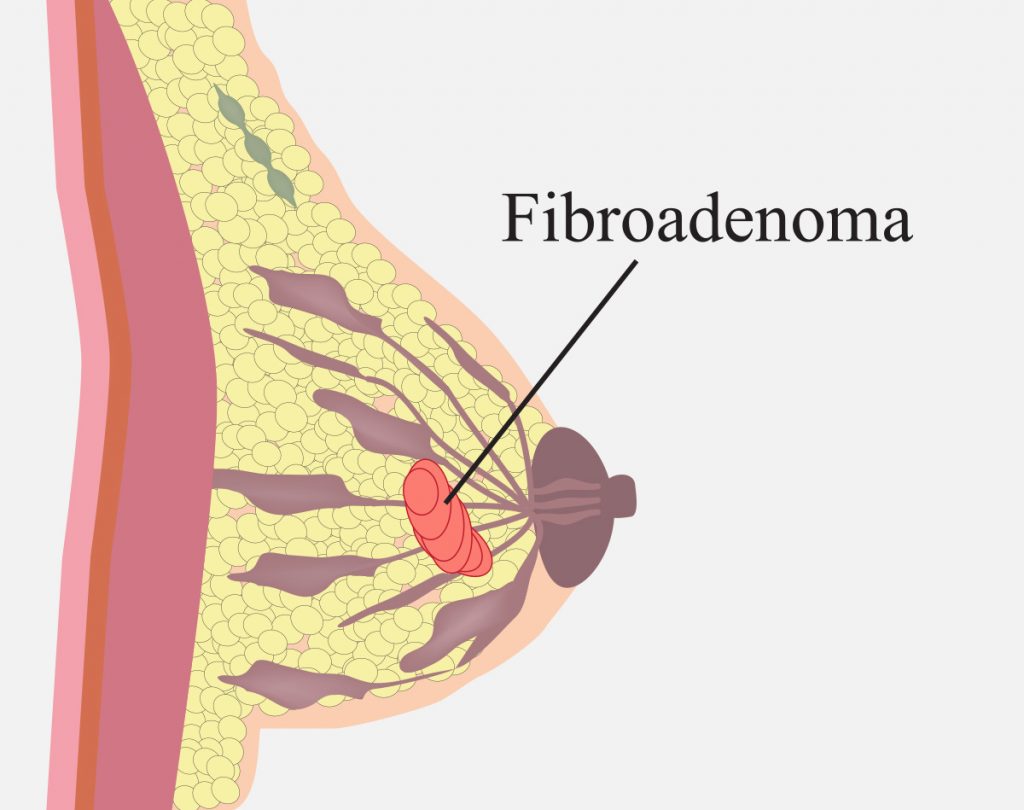
Understanding Breast Fibroadenomas, What You Need to Know.
Fibroadenomas are one of the most common breast tumors in women. While they are benign (non-cancerous), they can still be a cause of concern for women who have them.
This post will discuss what fibroadenomas are, their symptoms, and how they are treated. If you have been diagnosed with fibroadenoma, it is important to understand what this means for your health and to know what treatment options are available to you.
What Are Fibroadenomas?
Fibroadenomas are benign tumors that can develop in the breast tissue. They are most common in women between the ages of 20 and 30, but they can occur at any age. Fibroadenomas are usually smooth and round, and they can vary in size from a pea to a grapefruit.
Most fibroadenomas are not cancerous and do not increase your risk of developing breast cancer. However, if you have a family history of breast cancer, you may be at an increased risk for developing this type of tumor.

Fibroadenomas are benign tumors that can develop in the breast tissue.
What Causes Fibroadenomas?
The exact cause of fibroadenomas is unknown. However, they are thought to be caused by a combination of hormones and genetic factors.
Symptoms And Diagnosis
Fibroadenomas typically do not cause any symptoms. However, you may notice a lump in your breast that feels firm and rubbery. The lump may be painful, but this is not always the case.
Fibroadenomas are often found during a physical exam or a mammogram. Your doctor may feel a lump in your breast that is smooth, firm, and moveable. This type of lump is often benign, but your doctor will likely order further testing to confirm the diagnosis.
In some cases, a biopsy may be necessary to confirm the diagnosis. During a biopsy, your doctor will remove a small sample of tissue from the tumor so it can be examined under a microscope.

Fibroadenomas can often feel like a marble within the breast.
Treatments
Fibroadenomas do not usually require treatment. However, if the tumor is large or causing pain, your doctor may recommend surgery to remove it.
Surgery to remove a fibroadenoma is typically a simple procedure that can be done on an outpatient basis. In most cases, the entire tumor can be removed without damaging the surrounding tissue.
After the surgery, you will likely need to take it easy for a few days. However, you should be able to return to your normal activities within a week or so.
Complications
Fibroadenomas are generally benign, but there is a small risk that they could become cancerous. If you have a family history of breast cancer, your doctor may recommend that you have the tumor removed even if it is not causing any symptoms.
In rare cases, fibroadenomas can grow large and cause pain or other problems. If this happens, you may need to have surgery to remove the tumor.
Follow-Up Cares
If you have been diagnosed with fibroadenoma, your doctor will likely want to monitor the tumor closely. This may involve regular mammograms and physical exams. Your doctor may also recommend an MRI or other imaging tests if they are concerned about the growth of the tumor.

Some fibroadenomas are only found by an imaging test (such as a mammogram or ultrasound).
Conclusion
While breast fibroadenomas are not cancerous, they should still be monitored and treated by a doctor. If you have any concerns about a lump in your breast, please see a physician for an evaluation. Early detection is key to successful treatment of any condition.
We hope this article has been helpful and informative.
Dr James S Pendergraft | Orlando Women’s Center | Abortion Pill Clinic | Articles On Abortion


Leave a Reply